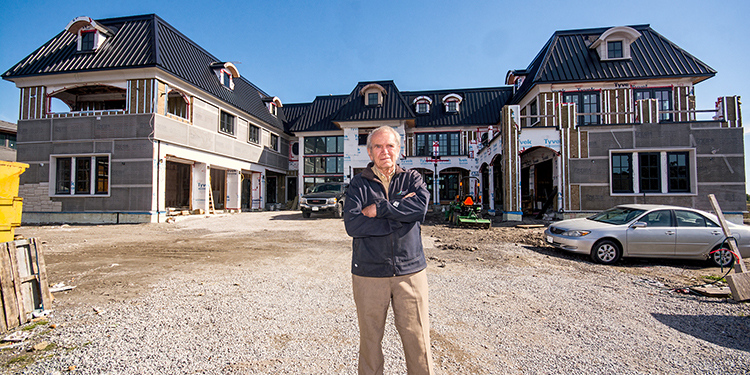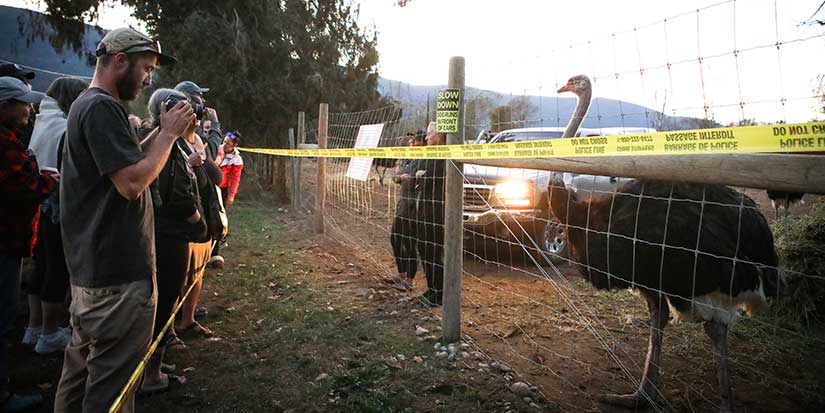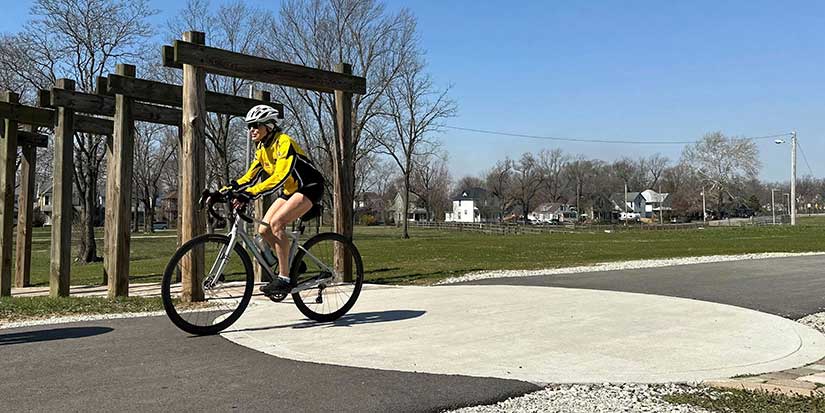Latest News
'Small farmers hurt most by mega mansions'
Published 10:16 PDT, Wed October 17, 2018
Last Updated: 2:12 PDT, Wed May 12, 2021
In the second of a two-part series, The Sentinel examines the housing-on-farmland issue.
Mega mansions sprouting from what once was
fertile farmland has become a common site closer to the heart of Richmond in
the past few years.
One of the most visible examples is the
recent construction on several small farming parcels on No. 2 Road, south of
Steveston Highway, which sit in plain view of a large residential neighbourhood
and on a busy traffic corridor where hundreds of drivers have witnessed the
gradual but unmistakable transformation during their morning and afternoon
commutes.
It’s easy to understand why this is upsetting
for many; there’s heightened public awareness about environmental conservation,
and greater knowledge and appreciation of the value of farmland.
One perspective is that for every square foot
of mansion that goes up, that’s one fewer square foot available to be farmed.
But the real issue, according to two local
farming advocates, is the soaring price of farmland that results from the
construction of these homes, and the negative impact that’s having on
small-scale farmers.
PRICES SOARING
Coun. Harold Steves said fast-rising farmland
prices is the biggest threat to local farming, and something needs to be done
about it.
Steves said by reducing house-size limits,
non-farmers would no longer be drawn by the prospect of building an estate-sized
home that’s largely sheltered from municipal tax rates by the property’s farm
tax status.
While a farmer might capitalize on the
fertile nature of Richmond’s land to grow vegetables, that wouldn’t be the case
for a non-farmer, he argued.
“A non-farmer would build a big mansion,
lease the (farmland out back) for a dollar to somebody who plants blueberries,
and it’s irrelevant whether you sell the crop or whether you harvest the crop
or whether you can find enough pickers as long as you’ve got your farm tax and
you don’t have to do any work on your so-called farm. If you don’t allow the
big houses, then you’re gonna have more of a chance (of finding somebody
prepared to farm the land),” he said.
Asked how likely it would be that new farmers
would be prepared to spend $1 million to buy a small parcel, Steves pointed to
a local family that’s leasing 2.5 acres and generated $104,000 in revenues.
“That’s not bad and that’s what this soil can
produce,” Steves said.
Steves noted that one owner said at a hearing
that he only made about $10,000 on 25 acres of blueberry fields. That farmer
should be growing vegetables instead, Steves said, and could make 10 times what
he did.
Asked why a local farmer would grow
blueberries when vegetables might be much more lucrative, Steves said: “Simply
because they’re not interested in farming.”
INDUSTRY IS COMPLEX
But Jim Vercammen, a University of British
Columbia professor in the Faculty of Land and Food Systems, said markets for
fruits and vegetables are very limited locally. If large-scale local farmers
were to suddenly switch to growing vegetables, that would flood the market, and
change the prices small-scale farmers are commanding for their produce from
local buyers.
Citing broccoli and sweet corn as examples,
Vercammen said in many cases it’s not profitable to produce that here.
Vercammen also said it’s “not
where you want to go” when he was asked about
whether regulations should be changed to favour farmers growing fruits and
vegetables for
the local market.
The way supply chains are established means
getting local food into the local supply chain is difficult. But the public
seems to be happy to buy bananas from abroad and export blueberries and
cherries to other markets.
Asked about the controversy about big homes
on farmland in Richmond, Vercammen said he appreciates both sides of the
argument, and said it’s a complex issue.
“It’s easy to get caught up in the hype on
both sides,” he said, adding there is no easy answer and that there are strong
arguments on both sides.
NOT ABOUT BIG HOUSES
“People who truly understand this issue do
not have an issue with farmers living in large houses,” said Laura Gillanders,
a coordinator with FarmWatch, an organization founded in 2013 by local farmers
and residents wanting to prevent the misuse of farmland.
The goal of the group is to preserve
farmland, end speculative development of properties in the agricultural land
reserve, and enhance farming viability.
FarmWatch has about a dozen members, mostly
vegetable farmers and ALR land owners, Gillanders said.
Small-scale farmers, like Miles Smart from
Cherry Lane Farm, are full-time farmers who feel they have less of a voice in
the community in which they work, and so have turned to FarmWatch for help.
“He’s got an amazing farm business,” Gillanders
said of Smart, who markets produce directly to a couple dozen restaurants in
the Lower Mainland. He too would like to see house-size limits brought down
from their current levels.
Rising farmland prices aren’t the only
challenge to new farmers.
Some small-scale farmers in Richmond have
tenuous year-to-year leases with landowners who happen to be investors who don’t
want their properties tied down for the long term, which would make them a less
attractive purchasing option, particularly for potential buyers seeking to
build an estate-sized home.
That annual uncertainty makes planning and
investments for infrastructure upgrades for the short- and medium-term
impossible.
FarmWatch urged Richmond council to follow
the assessment and recommendations in an independent report by Richard Wozny,
who concluded that small farm parcels were being bought and sold as urban
residential sites because buyers could build a home upwards of 10,000 square
feet. This was driving up farmland prices, which were commanding prices of
$750,000 and up to $1 million per acre, more than double of just a few years
ago.
Wozny recommended house size limits on farm
properties be brought in line with those in residential areas.
While members of the Richmond Farmland Owners
Association agreed that building 20,000-square-foot mega-mansions was
unnecessary, they pushed back at the idea of aligning local rules with
provincial guidelines.
Multi-generational farmers, including Dale
Badh, Humraj Kallu and Ben Dhiman, told The Sentinel they and their families
have worked hard to keep the farming industry alive in Richmond for decades,
and would like to maintain the option to build up to a 10,000-square-foot home,
which their extended families could grow into.
Capping house sizes at 5,000-square-feet
would hurt them, the very people who toil the local fields and do the work that
nobody else wants to do, they said.
Is there a middle ground that protects
small-scale farmers, without hurting multi-generational farmers who have relied
on extended family to keep their businesses afloat?
Gillanders said grandfathering existing
farmers, and seeking creative restrictions that would specifically address the
frenzy that seems focused on farm parcels of under five acres, are worth
further discussions.
“This speculation is not beneficial to
vegetable farming,” she said.
She said this battle is about land in the
heart of the city.
“This is not about East Richmond farmers, not
about need. This is about speculative development.”
SPENDING HABITS
With the Oct. 20 civic election now just days
away, Coun. Carol Day didn’t mince words about her perspective.
In response to the first instalment of this
series, she wrote an email to The Richmond Sentinel: “This story would have you
believe the REAL farmers live in palatial houses with marble floors, media
rooms, private gyms and grand foyers. I say that real farmers live in modest
homes with a small foot print so they can spend more time in the fields than
watching their projection TVs.”
Part One referred to the lack of a public
uproar when Richmond developer Milan Ilich built a 22,000-square-foot home near
the foot of No. 3 Road.
Day wrote: “The Milan Ilich home is brought
up as an example of a large estate home that was welcomed by locals 20 years
ago and how it is so unfair that builders are no longer allowed to build
22,000-square-foot houses on an ALR lot, pathetic is all I can say. Mr. Ilich
was an honourable man who generously gave back to his city over decades and one
needs only to look up his donations to the Richmond Hospital to appreciate his
contribution to our society. Shame on these people for trying to jump on Mr.
Ilich’s coat tails.”
While Gillanders doesn’t agree with Day’s
viewpoint of farmers and how they should spend their money, Gillanders noted
that what’s different between today and when Ilich built his home are the
economic checks and balances that existed two decades ago.
Ilich was among a small number of wealthy
people who built their fortunes here in Canada and occasionally built their
estates on farmland.
“It was local people who became wealthy and
(who) earned their money here in the country,” she said, adding that the size
of the regional economy by its nature capped how many of these wealthy people
existed.
But a spike in foreign investment has created
an uneven playing ground, introducing many more people of Ilich’s means to the
region and in turn more people interested in building these massive homes, with
small-scale farmers among the casualties.
And that’s what FarmWatch wants addressed.































